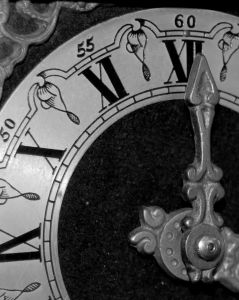Five reasons I write romance set in the ’70s and ’80s
Five reasons I write romance set in the ’70s and ’80s
Five reasons I write romance set in the ’70s and ’80s
-
Hannah
-
Hannah
An interesting gap exists in modern romance publishing. We have contemporary fiction, which is set in the modern time – usually the action predominantly takes place within a few years of the publication date. And we have historical fiction, which is usually seen as covering the period of history up to the end of the Second World War. So what of the latter half of the 20th century? Well, ‘contemporary history’ is a grey area, somewhat lost.
And yet, I choose to set books in the ’70s and ’80s. Not because I am an author who writes entirely to please a market, but because I am an author who must be true to herself and her experiences, and follow her heart when it comes to the ‘when’ of a story. Here are five reasons for my choice to write contemporary historical romance fiction:
- The male/female relationships: Such a fascinating time for men and women. On the one hand, there was yet a traditional, old-fashioned feel to romance and to relationships which I find alluring – still chivalry from the man, still naivety for the woman, perhaps. And yet by the same token women were enflamed with the need to stake their newfound right to equality – they were fiery, resolutely independent, passionate, empowered – and the male, in response, had to negotiate a fine line between being alpha and protective, and being respectful and supportive.
- The settings: Whatever country I choose as the setting for my novel, it was a different place in the ’70s and ’80s. Take Kenya, the setting for Burning Embers, in 1970. The new independence was shaping the politics, the culture and the very mood of the country. Traditions existed that modernity has stripped back. The country felt bigger, wilder, more dangerous – perhaps, to my mind, more beautiful. Overall, the energy of the time was different: in the ’70s, in particular, great rushes of freedom in societies evoked immense, exuberant, joyous passion which overspilled into the romantic arena.
- The culture: Theatre, literature, music, art, architecture – all during these decades were full of colour and life. From rock to disco, pop art to neo-expressionism, culture was changing rapidly in exciting and inspirational ways. The perfect backdrop to forward-looking, colourful, vibrant love stories!
- The fashions: Such rapid and novel innovations were made. For each character I write, I love to consider their clothing in keeping with the era. Self-expression through fashion was new but accepted, and women in particular had a wide choice of styles from which to choose. There were so many beautiful, sexy outfits on offer, just the attire for a female protagonist to attract her man. The shoes, the lengths, the fabrics, the cuts – even the jewellery: perfect to inspire the romantic imagination!
- The experience: ‘Write about what you know’ is the golden rule of writing. As much as I love historical romances, I’ve never been a 19th-century princess in love with a peasant, so I find it a stretch to write that. And having been happily married for many years, I am not au fait with the latest dating protocols (Match.com? Facebook? GPS tracking?). I do, however, remember fondly being a girl in love and swept away with romance in the era in which I write, and so when I put pen to paper, all the memories flood back and I find I slot right into the romantic sensibility for writing.
What do you think when you imagine a story set in the ’70s and ’80s? Are these decades infused with romance for you? Do you feel the pull towards contemporary history? Which would you dub the most romantic of the 20th-century decades? I would love to hear your thoughts.

I know this is a bit older, but I enjoy fiction set in contemporary history because it becomes timeless. It doesn’t really date like something set when a book is written. However, I do prefer to be subtle about time periods unless they’re really important to the plot. I think the 50s were pretty romantic. They were more simple times and love seemed very pure, but they all have their interesting romantic elements.